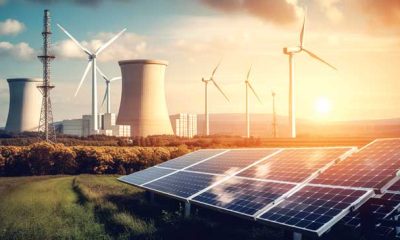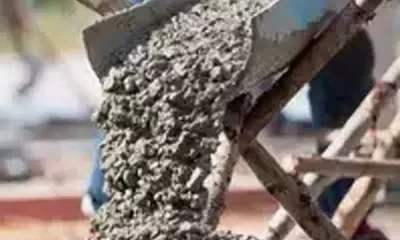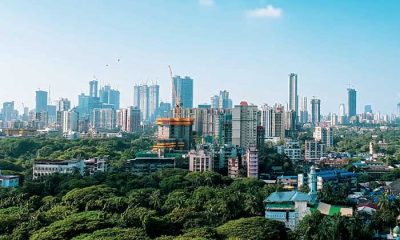Technology
Selecting Boiler Technology for Multi-Fuel Firing
Published
10 years agoon
By
admin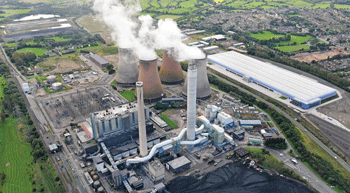
In the recent past the power sector, including the captive power generation segment, has seen many changes at policy levels, in options for sale and purchase of power, technological changes, business models and above all in issues related to fuel availability.
Fuel availability stands out as one of the biggest challenges for an energy intensive industry. With weak or expensive grid, most of the energy intensive industries had to resort to captive power generation. However, with recent volatility in fuel supply and costs, industrial investors had to look at multi-fuel options.
Associated Risks
As an investor, who is looking at investment in a mid sized power project, he has to look at the risks he carries, safeguards to put in place to mitigate them. The investor is stumped with the plethora of options at each stage, be it:
Development risks, including:
- Statutory clearances
- Linkages
- Financial closure
- Land and rehabilitation
Construction risks, like:
- Schedules
- Cash flow
- IDC
- Quality
Technical risks, including:
- Technology
- Developer/contractor?s competence and experience
Commercial risks
- Feasibility
- Project schedule
- Contractor?s financial strength
Operations and maintenance related risk
- Heat rate guarantees
- Manpower cost
- Plant performance
- And last but not the least, marketing and revenue related risk.
For a power project to succeed, an investor looks at the financial viability of the project. Two foremost factors on the investor?s mind are the project cost and the operating cost. Project cost comprise of capital cost, interest cost and the development cost. The second most important parameter being the operating cost of the power plant, which will enable him to forecast the cash flow. In a power plant the main operating costs being station heat rate, manpower cost and the cost of consumables.
The investor is concerned about the return on his investments, which come from the basic technical feasibility of the project and the technology being utilised. His return on investment also depends on the guarantees that he can get on the project cost and how well he can estimate and mitigate the variations. The performance guarantees are far more important than the project cost guarantees. Performance variations can bleed income from the project for its lifetime, which is typically about 20-25 years. The IDC and the returns starting to accrue come from the guarantee of the schedule he sets for the project and how it is adhered to. Generally, based on all these parameters and risk taking abilities of the investor and his bankers, the decision is taken whether to go ahead with the project on a packaged route of to pass the risk to a reputed EPC contractor.
An EPC contractor takes the entire risk of construction upon himself. If the EPC contractor is also a technology provider like a boiler manufacturer in the case of power plant, then even the technological risk is totally on to him. If the EPC contractor is ready to undertake long term operations and maintenance of the power project then the O&M risks is also passed on to him, leaving only the development risk and part of commercial risk in the developer and banker?s scope. The commercial risk can be further diluted with a financially sound EPC contractor and having watertight contract in place, leaving only the development risk in investor?s scope.
Role of Technology
In today?s context of fuel uncertainty, technology plays a vital role especially regarding boiler choice. One has to look at aspects like:
Boiler technology
Suitability of various kinds of fuels
Boiler pressure and temperature
Fuel firing limitations
Boiler efficiency and availability
Physical characteristics
Physical characteristics of the fuel should also be accounted for in the designing process. This is extremely important, in case biomass is being considered as a main or supplementary fuel. Physical characters include size, bulk density, flowability.
Chemical characteristics
Chemical constituents such as chlorine (elemental chlorine and not chlorides in ash) as chlorine in biomass can cause corrosion problems. So these factors must also be considered while designing the system. Alkali content (Na2O+K2O) in fuel leads to problems like slagging and fouling.
Boiler efficiency depends on moisture content in the fuel. Combustion efficiency depends on ash content and excess air. High excess air increases combustion efficiency however it also increases dry flue gas losses. NOx generation is a function of temperature, staging of air and excess air percentage.
If moisture content in fuel is high, in bed tubes can be avoided. In case most fuels being considered are solid fuels like mix of different types of coal, lignite or petcoke the options on technology can be a little easier.
Circulating Fluidised Bed Combustion Technology
Uncertainty regarding availability and reliability of single fuel type, stringent emission norms, constraints of firing multiple type of fuels in pulverised coal fired boilers and need of additional capital intensive accessories like coal mill, FGD, etc. led to development of Circulating Fluidised Bed Combustion Technology (CFBC) design. CFBC technology in today?s time of high fuel uncertainty and volatility can be considered as a boon to power and process industry requiring power and process steam.
CFBC is a fuel flexible technology, which can handle variation in GCV from 1800- 8000 kcal/kg, ash 5-65 per cent and moisture from 1-45 per cent. The turbulent bed, which is operating at 4-5.5 m/s, is able to enhance the fuel burn ability by rapid mixing of fuel with hot bed material resulting in efficient carbon burnout.
The CFBC technology has versions that have wider multi-fuel firing capability including:
Coal:
-
Anthracite, bituminous, sub-bituminous, lignite (Neyveli/Kutch/Barmer) and high-sulphur coal.
Waste Coal:
-
Washery rejects, char.
Petroleum coke (petcoke):
-
Delayed, fluid.
Other renewable fuels:
-
Sludge, oil pitches, biomass, agro-wastes and refuse derived fuel.
The new generation IRCFBC technology can easily cater to fuel with:
- Moisture content up to 60 per cent, e.g., in lignite, peat, sludge
- Ash up to 76 per cent, e.g., in washery rejects, char.
- Sulphur up to 8 per cent, e.g., in lignite, petcoke.
- Volatiles, as low as 1 per cent as in petcoke, washery rejects, char, etc.
- HHV as low as 1500 Kcal/kg as found in washery rejects, char, etc.
Factors to be considered while choosing boiler technology
Here is a list of few important factors that must be considered while choosing boiler technology.
Compact, economical design and construction
If the boiler technology design has lower furnace exit gas velocity and requires significantly less building volume, say by relying on internal recirculation, the design can eliminate J-valves, loop seals, high-pressure blowers, and soot blowers, which makes the boiler compact and economical on lifetime costs.
Separation in stages for better bed inventory control
If the design has optimal stage wise particle separation system, it will help to provide high-solids loading and a uniform furnace temperature profile. The benefits of this include superior combustion efficiency, high operational thermal efficiency, low emissions, low maintenance, low pressure drop, and high turndown, resulting in improved overall plant performance and particle collection efficiency as high as 99.8 per cent for better inventory control. The separation technology must be of fit and forget type.
Performance in varying and low load conditions
With effective bed inventory and temperature control through controlled solid recycle rate from MDC to furnace you get better performance and operation of boiler. Turn down ratios as high as 1:5 can easily be achieved in some designs.
Start up and shut down time
Some designs have much lower refractory heat retention as compared to other CFBC designs. This allows quick start and shut down of the boiler.
Auxiliary consumption
Boiler designs with higher velocity of gasses leaving furnace to achieve solid separation like using centrifugal action generally have higher pressure drops thus higher auxiliary consumption. Boiler designs with lower velocity of gases have comparatively negligible pressure drop and much lower auxiliary consumption.
Availability and lower maintenance
Maintenance of boiler is directly related to the quantum of refractory the boiler design carries. Boiler design with least level of thick, uncooled refractory and no hot expansion joints, reduces the expenses and the lost time associated with refractory maintenance. If the particle separators and super heater enclosures are constructed entirely of top-supported, gas-tight, all welded membrane tube walls. These systems do not require hot expansion joints, the maintenance over the lifetime of the boiler can be minimised substantially.
Some boiler designs ensure that there is no soot formation and uniform furnace temperature profile is maintained. Erosion is a major cause of maintenance problems in CFBC boilers due to high solid load in the flue gas. The severity of this erosion is exponentially related to the velocity of the flue gas through the system. While some CFBC designs have the particle separator based on an extremely high flue gas velocity. The high velocity provides the energy needed to efficiently disengage the particles from the flue gas. Other designs have particle separator designed to operate efficiently with much lower flue gas velocity (5 to 6 m/s) at full-load operating conditions. By operating at such a low gas velocity, the potential for erosion in these designs is reduced significantly.
Considerations in multi fuel firing
Calorific Value
The lowest calorific value like washery will call for higher amount of fuel feeding into bed. The feeders need to be sized for 1:10 turndown.
Moisture
The furnace cross section is decided by the maximum flue gas volume generated by respective fuel. In case of lignite or biomass with high moisture, low calorific value fuel, the flue gas generated will decide the cross-section dimension of furnace. In addition to this the ESP, ID fans need to be sized for handling higher gas volumes.
Ash
Higher ash content in fuels enhances the heat transfer rate in furnace. To maintain solids mass flux in furnace, the excess solids are taken out of system through bed ash cooler, located beneath the boiler. Hence, for high ash fuels like Indian coal, washery rejects, the number of ash cooler is to be decided based on the high ash fuel. The ESP will see higher dust loading in Indian coal; hence higher collection area will be required comparative to when firing petcoke or imported coal.
Sulfur content
Imported, Indian coal, lignite, petcoke possess sulfur in the order of 0.7, 0.5, 2, 8 per cent in the fuel. In CFB the sulfur capture is done by adding limestone along with fuel. Limestone reacts with sulphate forming sulfur tri oxide that is removed through bed drains.
Hence, high sulfur in petcoke will require higher limestone content and hence the limestone RAVs will be sized to deliver the required quantity. These parameters must be given serious consideration before investing in a specific combustion technology.
Vivek Taneja
Head-Business Development, Thermax, Power Divison.
You may like
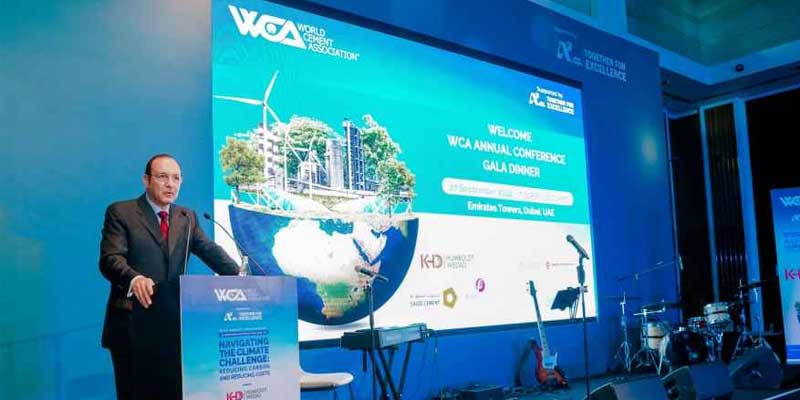
At the World Cement Association’s annual conference the WCA Director, Emir Adiguzel addressed the global cement industry to outline the challenges and opportunities facing the global cement industry.
The conference held in Nanjing, had industry leaders, innovators and stakeholders in attendance to discuss the future of cement production and sustainability. The WCAA director emphasised on the cement industry’s stern commitment to sustainability; spoke about the global cement demand and market dynamics, projecting a period of stagnation from 2024-2030 with growth expected only in the Middle east, India and Africa; about the challenges and opportunities in carbon capture technology hat show promise but will need further development and substantial investment as well as about the strategic initiatives and collaboration within the industry in improving sustainability and operational performance.
Adiguzel concluded his address by highlighting the crucial point where the global cement industry stands by saying “Collaboration within the World Cement Association is essential for sharing knowledge and aligning on long-term objectives. Ensuring the industry’s resilience and adaptation to evolving market dynamics is crucial for the survival of independent cement producers”.
Economy & Market
We are shaping the future of clean air
Published
3 months agoon
April 16, 2024By
admin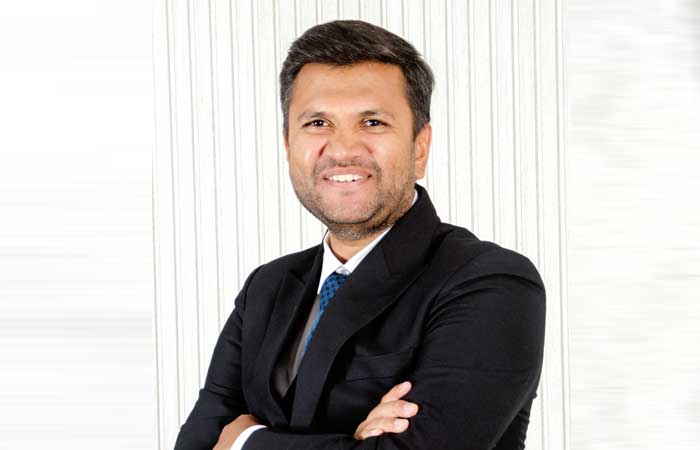
Monil Parikh, Managing Director, Techflow Enterprises Pvt Ltd, leads us to a better understanding of how cutting-edge designs and advanced technologies are revolutionising the process of filtration, driving efficiency and environmental responsibility within the cement sector.
Tell us about your air pollution control systems.
Techflow Enterprises, operating from our expansive 30,000 sq m facility, which is one of India’s largest, manufactures a comprehensive suite of air pollution control systems specifically designed for cement plants. Our solutions include:
Pulse Jet Bag Filters: Employing compressed air for efficient cleaning, these capture fine dust particles generated during grinding and packing. Techflow’s bag filters are designed to restrict the outlet emission up to 5mg/Nm3.
Electrostatic Precipitators (ESPs): Ideal for ultra-fine particulate matter in kiln exhaust gases, ESPs utilise an electric field for superior dust capture with 99.9 per cent capacity.
Centrifugal Fans: We offer various fans like induced draft (ID) fans for draft creation, process fans for dust-laden air transport, and kiln fans for high-temperature gas streams.
Techflow’s commitment to quality is evident in our proven track record. We are actively supplying solutions to leading cement players like Adani Cements, Ambuja and ACC Cement, Dalmia Bharat Cement and Wonder Cement. Our installations across India and Asia stand as a testament to our expertise in handling cement plant dust control challenges.
How do your products and systems integrate with cement plants?
Techflow’s air pollution control systems seamlessly integrate into your existing cement plant. Our pulse jet bag filters fit effortlessly downstream of grinding mills and packing stations, effectively capturing fine dust particles generated during these processes. Electrostatic Precipitators (ESPs) excel in kiln exit gas streams, working alongside existing cyclones to achieve ultra-fine particulate control, a critical step in maintaining clean air emissions.
Techflow’s comprehensive offering of centrifugal fans ensures a perfect fit for any application. Our ID fans seamlessly integrate into the kiln system, creating the necessary draft to pull exhaust gases through the air pollution control equipment. Process fans, strategically placed throughout the plant, efficiently convey dust-laden air from various generation points, like clinker coolers and raw material handling, towards the filtration units. This modular approach minimises disruption during installation and ensures optimal dust collection across your entire cement production process.
How do your innovative designs better the process of filtration at cement plants bringing efficiency to the process?
Techflow’s commitment to innovation translates to superior filtration efficiency and operational cost savings for cement plants. Our pulse jet bag filters incorporate features like:
- High-efficiency filter media: Designed for specific dust types, this media minimises pressure drop across the filter, reducing energy consumption.
- Improved flue gas entry design
- Low Pressure Cleaning Systems
- Optimised pulse cleaning systems: These systems efficiently dislodge dust cake buildup using compressed air, maximising filter media life, and minimising downtime.
Our ESPs utilise advanced electrode designs to enhance particle collection and reduce maintenance intervals. Furthermore, Techflow’s centrifugal fans are meticulously crafted for superior aerodynamic performance, leading to lower energy consumption and improved overall plant efficiency.
Techflow has developed a SMART-LINK automation module for better maintenance and real-time remote tracking of performance of each equipment. Cement plants equipped with Techflow’s systems experience reduced operational costs, minimised downtime and compliance with ever-evolving environmental regulations.
What is the key differentiator between traditional filters and modern filters?
Traditional bag filter systems often relied on manual cleaning methods, leading to inconsistent performance, increased downtime, and potential worker exposure to dust. Modern pulse jet bag filters, like those offered by Techflow, address these limitations.
Our systems leverage automated cleaning mechanisms, ensuring consistent filtration efficiency and minimal operator intervention. Additionally, advanced filter media materials in Techflow’s bag filters offer superior dust capture capabilities compared to traditional fabric filters.
This commitment to modern technology translates to a safer and more efficient and environmentally friendly dust control solution for cement plants.
Can your designs be customised as per the requirement of the customers?
At Techflow, we understand that every cement plant has unique dust control requirements. That is why we prioritise customisation across our entire product range:
Pulse Jet Bag Filters: Filter media type and micron rating based on dust properties, number of filter bags, and pulse cleaning system configuration like cycle time and pressure can all be adjusted to optimise performance for your specific dust and airflow. The system can be designed to achieve less than 5mg/Nm3 outlet emission standards as well.
- Electrostatic Precipitators (ESP): ESP design can be customised with features like the number of electrode rows, electrode spacing, and power input like voltage and current to achieve the desired dust collection efficiency for your specific outlet emission capacity less than 20mg/Nm3.
- Centrifugal Fans: Fan designs are tailored by adjusting factors like impeller diameter, blade design, and motor size to meet the specific pressure and flow requirements of various processes within a cement plant.
This focus on customisation ensures Techflow’s air pollution control systems perfectly match your cement plant’s needs, guaranteeing optimal dust capture and efficient operation.
What is the role of technology and automation in building filtration systems?
Techflow has designed a SMART-LINK System that can be integrated to our equipment which tracks and monitors performance of equipment in real time.
- Continuous diagnostics
- Condition-based maintenance
- Prevention of unplanned downtime
- Early problem detection using AI
- Data collection for process optimisation and efficiency maximisation
- Auto alert with warning driving timely human interactions
- Remote maintenance assistance by Techflow Team.
What are the major challenges in the filtration process and your system integration at cement plants?
The cement industry’s focus on sustainability, higher production and diverse fuel sources creates filtration hurdles. Adapting to changing dust properties, handling increased dust loads, and integrating seamlessly within space constraints are key challenges.
Techflow tackles these issues through advanced design techniques, exploration of innovative filter media, and modular system design. This ensures our filtration systems remain adaptable, efficient and seamlessly integrated within your cement plant, empowering your success.
How do you plan to further better your products and bring innovation in the future?
At Techflow, we are not just building filtration systems, we are shaping the future of clean air in the Indian cement industry. After successful expansion of the manufacturing facility in 2023, now it is time to improve designs and process optimisation. The future holds exciting possibilities: next-generation filter media with self-cleaning properties and
extended lifespans, minimising maintenance and maximising efficiency.
Techflow’s legendary after-sales support is about to get even better. We are expanding our global service network to provide you with 24/7 access to a team of India’s most experienced filtration specialists, ensuring your system operates flawlessly throughout its lifecycle.
Together, we will lead the way towards a sustainable future, paving the path for a greener tomorrow with green cement.
- –Kanika Mathur
Economy & Market
Digitalisation is changing the logistics landscape
Published
3 months agoon
April 16, 2024By
admin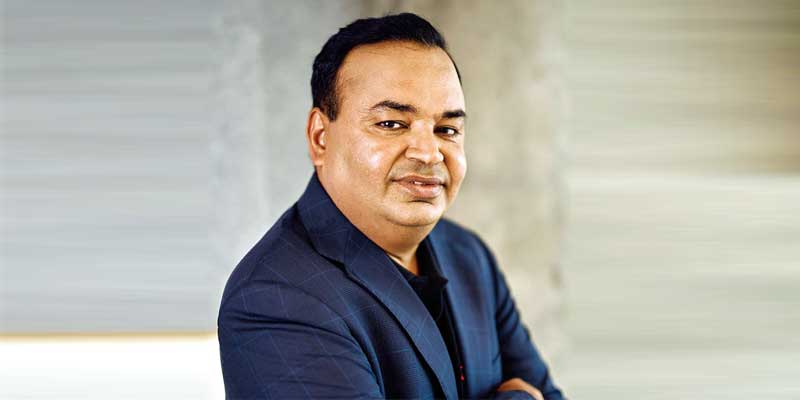
Haresh Calcuttawala, CEO and Co-Founder, Trezix, explains how their platform streamlines export processes, optimises logistics operations, and addresses the challenges faced by the cement industry.
How does your platform help in the compliance of cement exports?
The Trezix platform helps with the end-to-end processes for exporters, ensuring complete visibility of these processes focusing on shipments, documents, compliances, etc. The platform is also integrated with various stakeholders’ part of the export process including integration with Unified Logistics Integration Platform (ULIP) by the Government of India.
What is the impact of your systems on the cost and productivity of a cement plant?
The Trezix platform helps to optimise the turnaround time, visibility of shipment and improving efficiencies, which results in optimisation in logistics cost and improvement in working capital.
What are the major challenges in logistics and how can that be resolved?
A major challenge in the cement industry is the logistics cost and time for delivery. This can only be resolved with faster turnaround time, complete visibility of shipments, delivery lead time and process control to adhere to compliance.
Tell us your views on the change technology is bringing to logistics.
In the cement industry, so far technology has been more focused on internal process, and optimising demand and supply in the area of supply chain. However, now the focus has completely shifted to external stakeholders and their processes, and how have we integrated processes to further optimise the logistics execution.
Can your systems and solutions be customised based on customer requirements?
Every customer has some unique value proposition for their customer segment. Trezix has flexibility by way of configuration to adhere to industry needs and specific customer needs, keeping in mind the regulatory processes are not deviated to fulfil statutory requirements.
How do you foresee the face of logistics changing for the cement industry?
Digitalisation is one of the biggest waves you can see in the logistics space, which is changing the face of the industry. Digitalisation is changing the logistics landscape. Various concepts like Just In Time (JIT) to customer delivery are now a reality. Vehicle utilisation, fuel efficiency, delivery visibility, vehicle tracking through RFID, Fastag, FOIS (rail receipt tracking), container/cargo tracking across geography is now a reality.
- –Kanika Mathur

Indian cement industry applauds budget FY25 for focusing on decarbonisation

Towards an expanding horizon

Advancing Industrial Efficiency

We are excited about the future

Strong branding can create customer loyalty

Indian cement industry applauds budget FY25 for focusing on decarbonisation

Towards an expanding horizon

Advancing Industrial Efficiency

We are excited about the future




